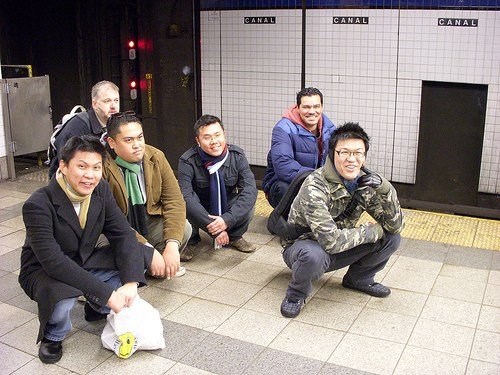|
Hydra Movement: Strength is just the beginning!
I’ve often joked with members in the gym, how easy it for them to squat because of their Asian squat mobility. It can’t be denied that athletes of Asian descent more often have a comfortable, well-balanced squat and often require less coaching to achieve an optimal squat position.
What is the ‘Asian squat’? You may not have heard of the term ‘Asian squat’ before. It is essentially a squat where the individual is able to sit in an extremely deep squat position while keeping their heels firmly planted on the ground. Often the individual feels this position is quite comfortable, and some people can stay there for prolonged periods of time while performing activities such as eating, taking photos, playing with children or yes, even going to the bathroom. Why is the ‘Asian squat’ so predominant in Asians? As you may or may not know, squat toilets are fairly predominant in Asian countries. They are often deemed to be more sanitary (although this may be debatable depending on the condition one finds these toilets in) as there is no bare skin and seat contact. In addition, lots of people see the squat as a great way to sit and prefer it to using chairs as it can be performed anywhere. In comparison, Westernised countries have adopted the upright seat-style toilet that we are more familiar with in Australia, and use chairs far more frequently. In this case, the saying is true, practice has made perfect with the Asian squat. However, it is not exclusive to people of Asian descent. I have seen people who do not have Asian heritage and are able to sit into identically deep and comfortable Asian squats. I have seen people with Asian heritage who have never used a squat toilet and can still sit into a perfect squat. I’ve seen people of Asian descent who cannot squat deeply. Also, I’ve seen toddlers able to sit into squats more easily than most adults, regardless of race. So, if the Asian squat isn’t exclusive to race, what makes it so easy for some and so difficult for others? What allows for a deep squat? One of the most important factors for a deep squat is ankle flexibility, and unsurprisingly this isn’t exclusive to people of Asian descent. Having flexible calves allows you to sit into a deep squat while pushing your knees forward. If you’d like to get technical, Bryan Ausinheiler measured the ankle flexion angle of his one day old daughter, which was 70 degrees. The majority of people in the West have approximately 30 degrees. If you do not regularly mobilise this area of your body, as some people do when they are using the bathroom daily etc., this area will tighten up and make it difficult for you to a deep squat. This problem is even more pronounced in individuals who wear high-heels on a regular basis, as regularly having your heel higher than the ball of your foot can cause the calf to tighten up. As for Asians who have never used a squat toilet and have been born and raised in Westernised countries, they may have adopted the position by copying their parents and other relatives throughout their life. Essentially, we are all born with the flexibility for an Asian squat, but it’s a case of use it or lose it! Are there any benefits to a deep squat? Being able to perform a deep squat is a great display of flexibility. Being flexible, to a point, is beneficial to your overall health and movement. There is a small tradeoff between strength and flexibility, however. Having too much flexibility can create instability in your joints, increasing your risk of injury. Also, there is an optimal amount of stretch in muscles which facilitates the greatest amount of strength and power output. Sitting in too deep a squat can be a great way to limit your 1RM or maximal squatting strength. Additionally, squatting while defecating has been theorised as a much healthier way to go to the bathroom, due to a more optimal positioning of the muscles within the pelvis although this is still somewhat debated. Most Western toilets do not allow for squatting, but you can purchase products online which imitate a squatting position without the use of an actual squat toilet. Whether these are a bit of a gimmick or not is somewhat unclear, but whatever helps! Hip osteoarthritis (a condition regularly associated with advanced age) is very rare in Eastern countries such as India and Asia, although knee arthritis rates are similar to Western countries. While there may be genetic or other factors (diet etc.) that play into this, the regular performance of deep squats may also play a part. Additionally, maintaining strength and a larger range of motion can allow individuals to stay more independent for longer at an advanced age. Love it? Let us know by commenting below!
|
AuthorAnurag Gill is the Head Coach at HYDRA Movement in Moonee Ponds. Archives
June 2019
Categories |
|
|

 RSS Feed
RSS Feed
